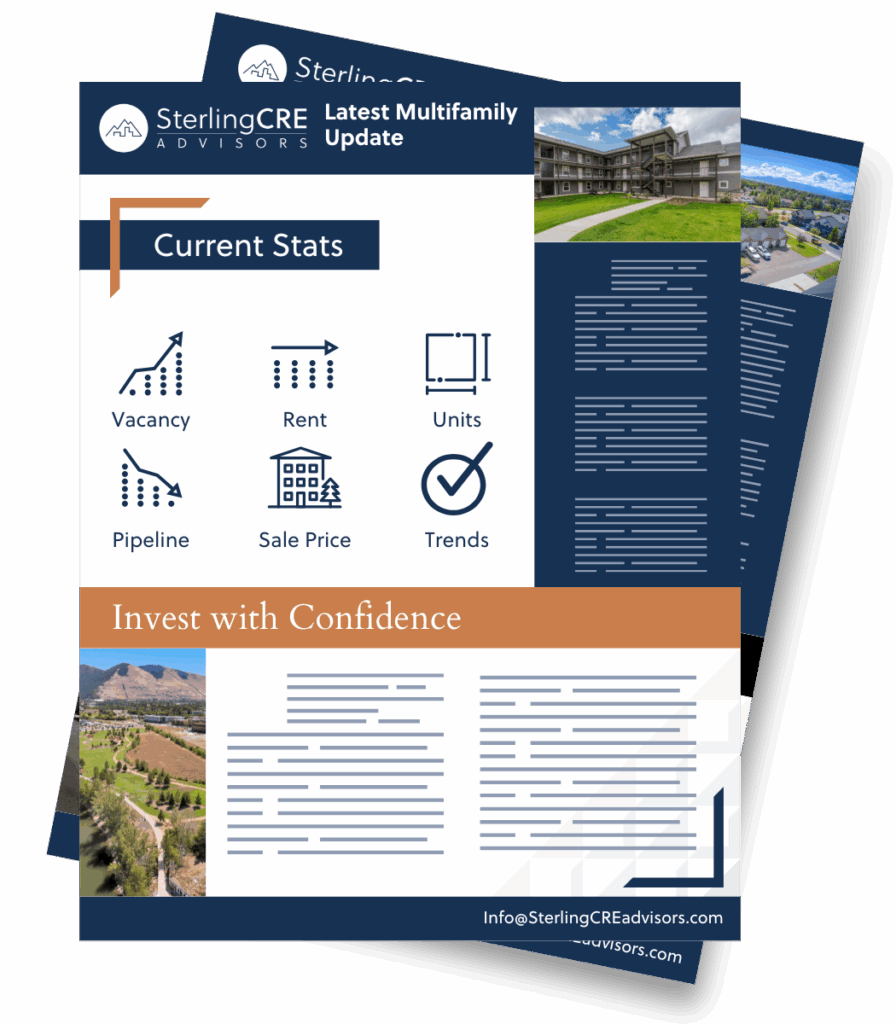Is a CRE Deal Really that Different?
Working through the process of buying or selling commercial real estate can be daunting. I’m Claire Matten, advisor with Sterling Commercial Real Estate. I’m here with advisor Matt Mellott to provide a high level summary of a commercial real estate sale from end to end.
Taking an asset to market starts when a property owner solicits an opinion of value from a local team of commercial real estate experts. In an opinion of value, our team brings together a library of proprietary market data and knowledge to define a price range for the property.
After considering our opinion of value, folks generally engage our team to market the property. Commercial properties are listed on platforms like Loopnet and Crexi, which are sort of the Zillow of the commercial real estate world. At the same time, we aggressively market the property to our network and across the US.
Letter of Intent + Purchase and Sale Agreement
Once a prospective buyer for a property is identified, the buyer usually sends an LOI – or letter of intent. The LOI sets out very basic terms to be sure no time is wasted by either party before getting to the next phase – a more intensive purchase sale agreement.
The purchase sale agreement, or PSA, follows. Unlike an LOI, once signed, the PSA is a legally binding document that includes far more details than an LOI. The PSA includes provisions for earnest money, sets key dates, disclosures, and clearly defines the terms of the sale.
Due Diligence and Financing
Once the PSA is signed, due diligence can commence. In a commercial sale, due diligence looks different from a residential sale. One major difference is environmental survey – depending on former uses, age and other factors, it’s crucial that a phase 1 environmental site assessment is performed to be sure that any environmental concerns are uncovered.
Like a home sale, inspections are a necessity – but in a commercial sale, those inspections can be more complex depending on the type of facility.
Due diligence is usually 30 days or more, and can be pushed out for much longer in some cases – such a rezoning request, change of use permitting, or other factors. During this time, a financing contingency may run concurrent to due diligence.
A financing contingency is just that – time for the buyer to secure all necessary funds to make the sale. Finally, closing can be a lengthy process as both the lender and the title company take time to thoroughly review all documents.
Review, Review, Review
We always recommend that clients engage a lawyer to review the documents at this time as well. While we know legal review can be pricey, it’s definitely a case in which an ounce of prevention is worth a pound of cure.
Once all parties confirm that documents are error-free, financing is in order and all inspections have come back clean, it’s time to close the sale.
This is a pretty general overview – every transaction requires unique handling. Here at Sterling CRE Advisors, we work through a strategic 200 point process to be sure no money or time is wasted by buyers or sellers.
Thanks for tuning in to How Does That Work? Subscribe to Sterling CRE Advisors news for more quick CRE education like this.
Contact Matt Mellott or Claire Matten for information on Montana’s commercial real estate market.

